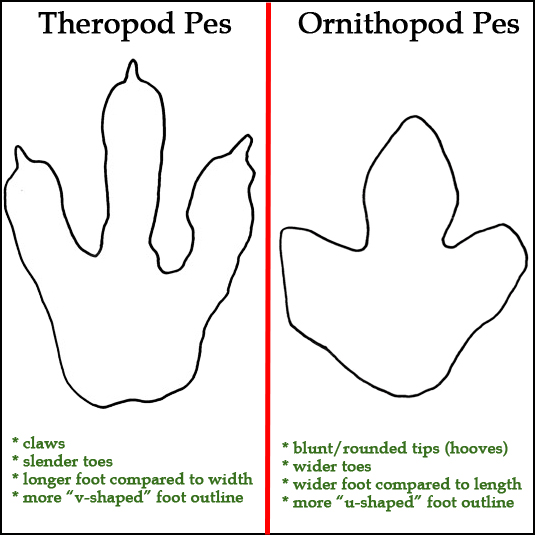Rare Jurassic Trackways Discovered in Western USA
A series of dinosaur trackways dating from the Early Jurassic have been discovered near to the Arizona/Utah state line in the Western United States. The site which covers approximately 3/4 acre is covered in numerous impressions, scientists estimate that at least four types of dinosaur are represented, although the researcher’s comments have led to other scientists requesting further analysis before firm conclusions can be drawn. An estimated 1,000 footprints have been observed along with a number of strange parallel line impressions in the sandstone rock, interpreted as tail drag marks.
Dinosaur Trackways
The study of this remote site in Arizona, dating from approximately 190 million years ago (Pliensbachian faunal stage), has been undertaken by a team of researchers from the University of Utah. It is believed that the site represents evidence of an ancient waterhole surrounded by desert. A whole range of prehistoric animals were attracted to this source of water and their footprints have been preserved in the soft sand surrounding the water. Interpreting the tracks could prove difficult as the trackways are muddled up and may represent activity at the oasis over a long period or the result of specific short-term conditions that led to the preservation of these impressions. Churned up ground as a result of numerous dinosaurs stomping over a particular site even has its own special name used by palaeontologists – the phenomenon is known as “Dinoturbation”.
Commenting on the discovery, Marjorie Chan (University of Utah) stated:
“All these footprints at a watering hole might tell us something about the social life of the dinosaurs”.
Chan, the co-author of the published paper on this site with University of Utah graduate student Winston Seiler wonders which species might have mingled at this “dinosaur dance floor.” Perhaps these tracks are evidence of a prehistoric version of Strictly Come Dancing!
The paper detailing the trackways is being published in the scientific journal Palaios, but the interpretation of the data has attracted controversy since the site was first discovered in 2006. A number of scientists have questioned the research team’s conclusions and some of even doubted that authenticity of a number of the marks and impressions left in the sandstone.
Numerous Impressions
In the pictures supplied in press releases a number of impressions can be seen, these could be the tracks of large long-necked dinosaurs called sauropods, although other scientists have expressed doubts over the exact interpretation of these impressions. Ichnologists (the name given to scientists who study trackways and prints), are notoriously cautious when it comes to deciphering information from such trace fossils. A general identification can be made possibly down to family level but prints such as these cannot be linked to a specific genus or species. To do this with any level of confidence fossilised bones have to be found in association with the footprints. No bones have been recovered from the site, the research team have stated that perhaps conditions were not conducive for bone preservation.
Theropod (meat-eater) tracks as well as plant-eating dinosaur trackways have been identified at the site.
Smaller tracks could be smaller species or younger dinosaurs. “Sometimes it’s really hard to tell,” Chan said. The print patterns may help scientists understand how groups of dinosaurs moved and provide information on potential herd structures.
Are They Dinosaur Tracks?
However, not all scientists are convinced by the conclusions drawn by the Utah based research team. Alan Titus, a palaeontologist at Grand Staircase-Escalante National Monument in nearby Kanab, Utah, has not seen the site in person but remains unconvinced that these are really dinosaur tracks.
“I’ve observed thousands of tracks in Early Jurassic rocks of the Colorado Plateau and have never seen one that looked like the one in the news release,” he commented, adding that he would have to view the prints in situ to get a clearer picture.
Utah’s state palaeontologist Jim Kirkland also has not been to the site personally, but he has seen many of the researchers’ photos and agrees with some of their conclusions. He has stated that he believes that some of the impressions are most certainly dinosaur tracks but remains sceptical about the evidence for tail drags. Tail drag impressions are exceedingly difficult to verify.
Different Types of Dinosaur Track

Theropod print compared to an ornithopod print. Different types of dinosaur track. Picture credit: Everything Dinosaur.
Picture credit: Everything Dinosaur
In any case, he said, the find could reveal a wealth of new information about dinosaur behaviour and herd interaction.
“Someone needs to take this to the next level,” Kirkland said. “It’s an exciting site.”
A number of alternative explanations have been put forward for the strange pothole like structures, they may have been caused by water induced erosion, however, Winston Seiler, the discover of the site commented:
“Upon close inspection many of the impressions are ringed by mounds of displaced sand that had to be formed when the sand was soft, before it was turned to rock.”
Although the site is remote and difficult to access, more research will be required before the palaeontologists can get to grips with what happened at a desert oasis 190 million years ago.
Everything Dinosaur stocks a huge range of dinosaur and prehistoric animal models, toys and games.
Visit Everything Dinosaur’s user-friendly website: Everything Dinosaur.






Leave A Comment